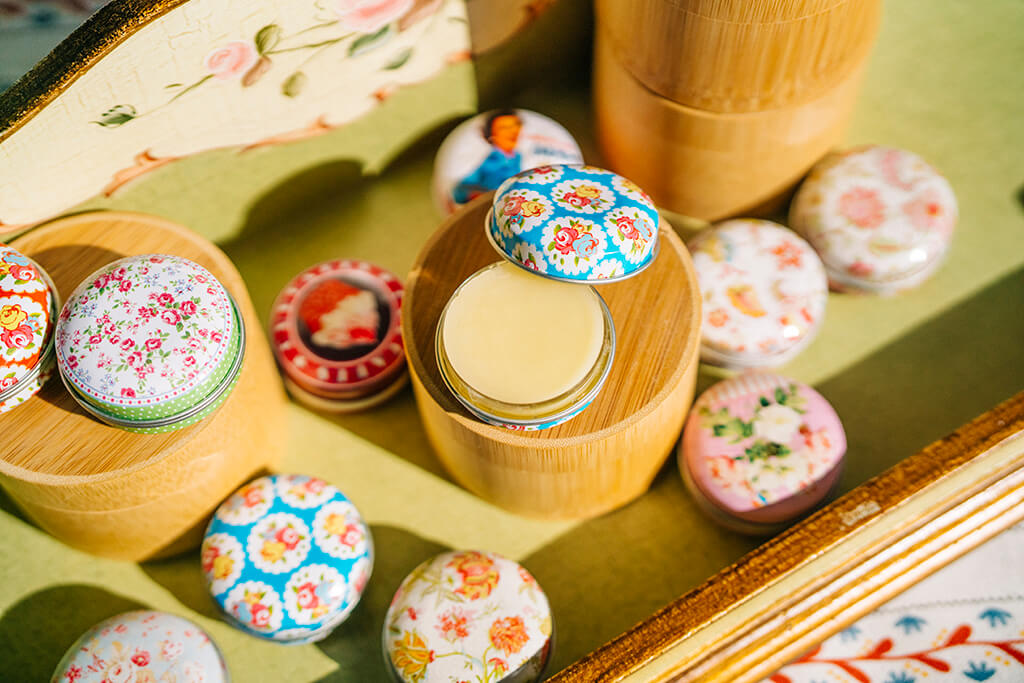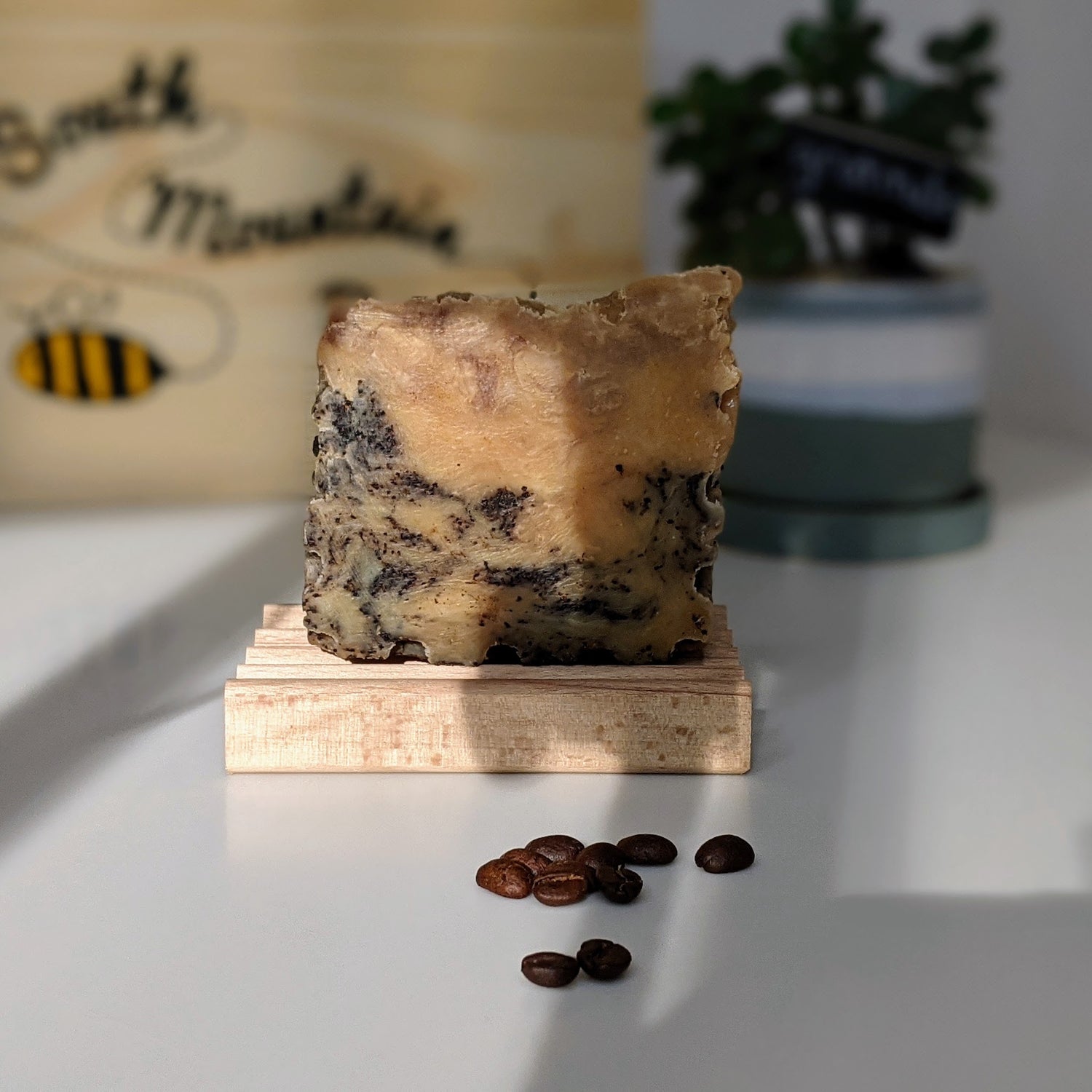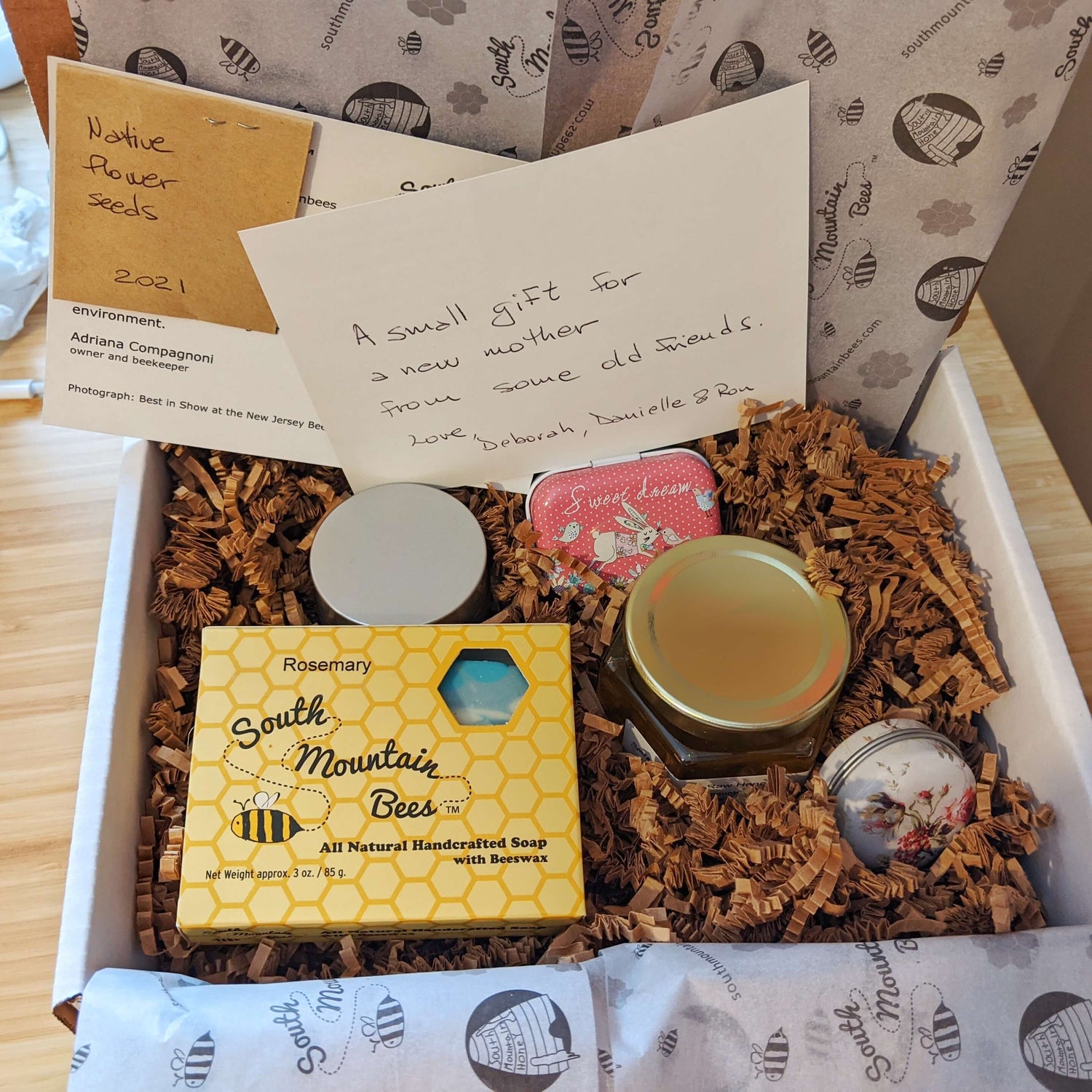Hi, This is Adriana, the beekeeper from South Mountain Bees.
Preparing entries for the New Jersey Honey Show is one of my favorite parts of beekeeping.
While I am a hobbyist and my bees help our local environment, my fellow commercial beekeepers play an essential role in bringing food to our table. However, beekeeping is often an invisible component of farming. When we go apple picking in the fall, we often forget that where we see an apple once there was a flower with a bee.
The honey show brings visibility to beekeeping, and we all benefit from it. So now you know that when you buy our soap, our lip balm, or a jar of our honey, you are literally helping beekeeping.
This year I decided to submit entries in 5 categories: dark extracted honey, light extracted honey, soaps, lip balm, and photography: bees without people. We beekeepers have very creative category names. Can you guess what the other category in photography is?
The soap is usually the one I start working on first, except for the honey, if we count harvesting last summer and fall.
Did you know that there are basically two ways of making soap? One is fast and one is slow. The one that lets you make pretty swirls more easily, is the one that takes longer to cure. Therefore I need to decide a few weeks earlier what I’m going to make. This year I went for a rosemary soap with blue and gray swirls.
You’ve probably seen online videos of people pouring soaps and making swirls. However, one last step that is often skipped is steaming. Yes, you read that right. Boiling water and producing steam to finish the soap is the last step in preparing a head turning product.
Handmade soap often has ash that creates a white veil on the surface of the soap. It doesn’t always happen, but it often does. There's nothing wrong with it, it just doesn't look pretty. There are beautiful colors underneath, but you can’t really see them.
Did you know about soap ash? I didn't know about it, until I started making soap back in 2014.
This year the photograph was easier to choose, because I had a very clear best picture among my short list, and since last year I learned how to mat a photograph, this year it was easier. What did we do before YouTube to learn all the tricks?
I ordered the prints online, and picked them up the same day. Except they had lost my order, and a 2 minutes pick up turned into a 45 minutes wait. Sounds familiar?
I submitted this picture from our bird bath. We put tree bark floating in it so that bees have a landing spot and they don't drown. These girls seem to be watching their own reflection.
Have you ever seen bees collecting water?
Next was the lip balm. I’ve been submitting entries for lip balm with the same formula since 2016, and sometimes it scores best in the cosmetics division. So I try my best to get a top quality submission.
Each entry in most categories consists of three units. Since the beeswax lip balm is hand poured, it is hard to get the exact weight on all three. So I pour a bunch and then choose. Sometimes I can’t get them exactly right, but this year I got them all the same weight, according to my scale. I ended up making 14 to be able to choose 3.
I always leave the honey entries for last, because I find them so stressful. In fact I start them first and finish them last. Let me explain. As you know, honey crystallizes over time. It is part of the natural life of honey. However, submitting crystallized honey to the show will not get you very far in this beauty contest. So...
In order to remove any crystals, even those that you can’t quite see yet, but are already forming and are thickening the honey, we need to warm it up. But it needs to be done so that we don’t damage it. If we warm it up above 140F, the honey will have a bitter aftertaste. Have you ever tried those diner honey packets? You probably know what I mean, and I think that’s why you’ll hear many people saying they don’t like honey. I always wonder what honey they have tried.
On the other hand, if we keep it around 100F, it takes forever to dissolve the crystals. I mean days of controlled temps. And that’s exactly what we do. Before, I would use a double boiler, and stand next to it with my infrared thermometer. I would turn it off when it reached 100F, and turn it back on when it got too cold. That would go on for several days. It wasn’t fun. I even considered a slow cooker, but those have a minimum temperature of 250F or so. At least the one I have. So that wasn’t an option. Finally, I realized that a roaster can be set at 100F. So I filled it with water, put the large 5 pound honey jar in the middle, and in a few days all crystals were gone, and the honey had a beautiful golden color. I did the same for the dark honey. I took the opportunity to discard the top layer of honey that had any pollen, wax, lint or comb debris common from the harvest process. Then I poured the honey in the pound jars required for the Honey Show. I poured three jars for each honey category entry.
Did you notice that when you pour any liquid into a jar it makes bubbles? Beer is a good example, but you can also see it in water. What happens here is that the air bubbles are trapped in the honey, and they may not make it all the way to the surface quickly enough, and they will form crystals in a few days. So I had to warm the six jars at lukewarm temperature again to get those bubbles to pop to the top so that I could scoop them out with a spoon or wet Q-tip.
Cleaning those last bubbles at the top is the part that I find most stressful. Did you ever see lint floating in the sunlight? Well, they are there even when we don’t see them. If anything or anybody moves within a few yards of the jar you are working on, you are likely to get some lint on the surface of the honey. And it sticks out like a sore thumb!
Besides cleaning the honey, we need to make sure it has the right amount of naturally occurring water in it. Did you know about the water content in honey? I didn’t know until I started beekeeping. I remember as a child that sometimes honey had fermented scent, and I didn’t know why. Well, now I know: too much water! The acceptable percentage of naturally occurring water in honey is between 15.5% and 18.6%. The best quality honey as judged in competitions is between 15.5% and 17%, but up to 18.6% it is still excellent quality.
If honey has more than 18.6% water content, all those microorganisms that surround us, such a yeast, can colonize the honey and ferment it. The smell of fermented honey is off-putting, and I dare you to taste it! Those of you who make sourdough bread and harvest your own wild yeast, know that those invisible guys are everywhere. You just need to leave water on the kitchen counter and voila!
But, what’s wrong in honey with water content below 15.5%? I had the same question. Luckily, I have fellow beekeepers that can help me answer it. If honey has than 15.5% water in honey it is so thick that it doesn't flow. We could still spoon it out of the jar, and the taste will be perfect. It will just be too hard to bottle.
Do you know how to measure the water content of honey? The instrument most commonly used by beekeepers to check the water content of honey is a refractometer.
How does a refractometer work? When light enters a liquid, it changes direction; this is called refraction. A refractometer measures the degree to which the light changes direction, called the angle of refraction. That angle is associated with the water content in the liquid, and it is visible in the scale of the refractometer. Here’s a picture of the water content of the honey I submitted. Pretty nice reading!

COVID has turned our schedule and activities upside down. I am grateful for those in charge of the Honey Show for making it happen. We still don’t know if and when the winning entries will be displayed. I guess we will find out soon.
Thanks for reading!
Make sure to follow us on Instagram!








